Anaplasmosis in lamb carcasses with jaundice and splenomegaly
We have recently received several inquiries due to an increased number of lamb carcass condemation due to an increase of the spleen size (splenomegaly) and yellowish discolouration of the carcass (jaundice or icterus).
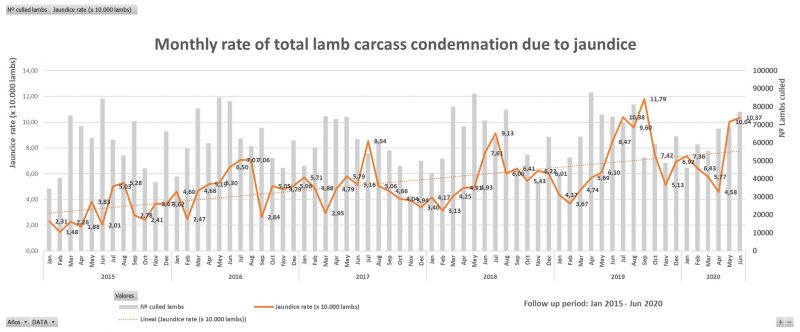
In the last five years, the number of lamb carcasses condemned due to jaundice has doubled in Catalan slaughterhouses. The condmenation rate follows an upward and markedly seasonal trend, especially in July. Last year the peak was also repeated in September. This seasonality is probably related to the evolution of the blood parasite vector populations (ticks). Source: Register of Sacrifices and Declarations (RSID). Sub-Directorate General for Food Safety and Health Protection. Department of Health. Generalitat de Catalunya.
The histopathological study of the liver ruled out liver lesions that could explain this jaundice and no obstructive lesions were observed in the bile ducts, therefore diagnostic research efforts were directed at possible causes of pre-hepatic jaundice, associated with hemolytic processes (rupture of red blood cells).
For the diagnosis of blood parasites, the ideal sample is blood with EDTA to perform a blood smear and observe its presence. Therefore, jaundice should be detected during the pre-mortem examination. In addition, it is recommended to send fresh samples of spleen, kidney, lymph nodes and liver to rule out other causes.
By splenic tissue PCR, the presence of the genome of Anaplasma spp could be detected in samples from 5 lambs of different origins (Barcelona, Tarragona and Granada), another specific PCR led to identify the species: Anaplasma ovis. Other species that may affect small ruminants such as Anaplasma pagocitophilum were ruled out. These are Ricketsial bacteria (same family as Ehrlichia spp) that are transmitted by tick bites.
Anaplasmosis usually does not show clinical signs in sheep and goats on its own, it causes anemia due to the extravascular elimination of infected erythrocytes in the spleen.
Pyroplasmosis was also ruled out (Theileria spp and Babesia spp.) These are Apicomplexa protozoa (Chromista Kingdom) that are also parasitic within erythrocytes and are transmitted by tick bites.
A PCR of the genus Mycoplasma was also performed to rule out that these were cases of Mycoplasma ovis (formerly known as Eperithrozoon ovis).
Another bacterium that can cause jaundice in lambs is Leptospira spp. Which can also induce hemolysis. Leptospira infection was ruled out by renal tissue PCR in these cases.
Hemoparasitic PCRs were performed in collaboration with NEIKER laboratories, the Basque Institute for Agricultural Research and Development.
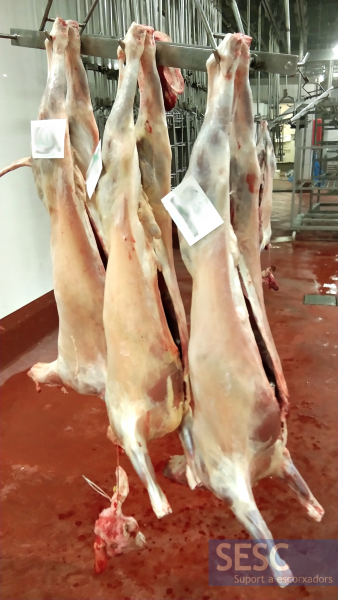
Yellow discolouration (jaundice or icterus) in lamb carcasses.
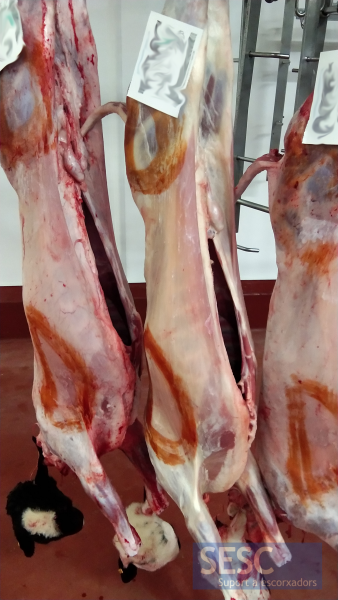
Jaundice is motive for total carcass condemnation in lamb carcasses.
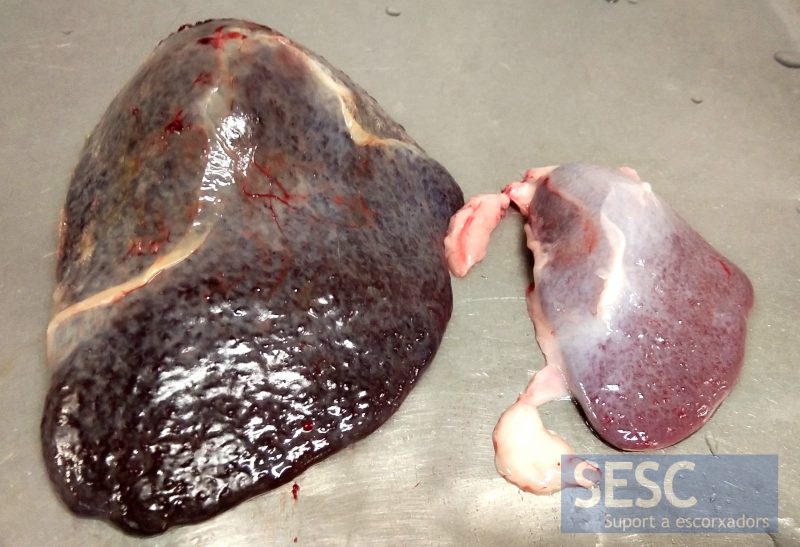
Conspicuous enlargement of the spleen (splenomegaly) on the left compared to a normal spleen (right).
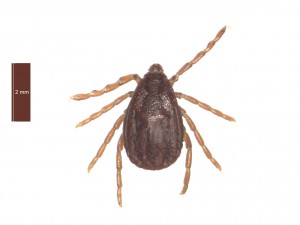
Rhipicephalus bursa is a tick that can transmit Anaplasma ovis and other hematic parasites. Image: University of Bristol Tick ID.

